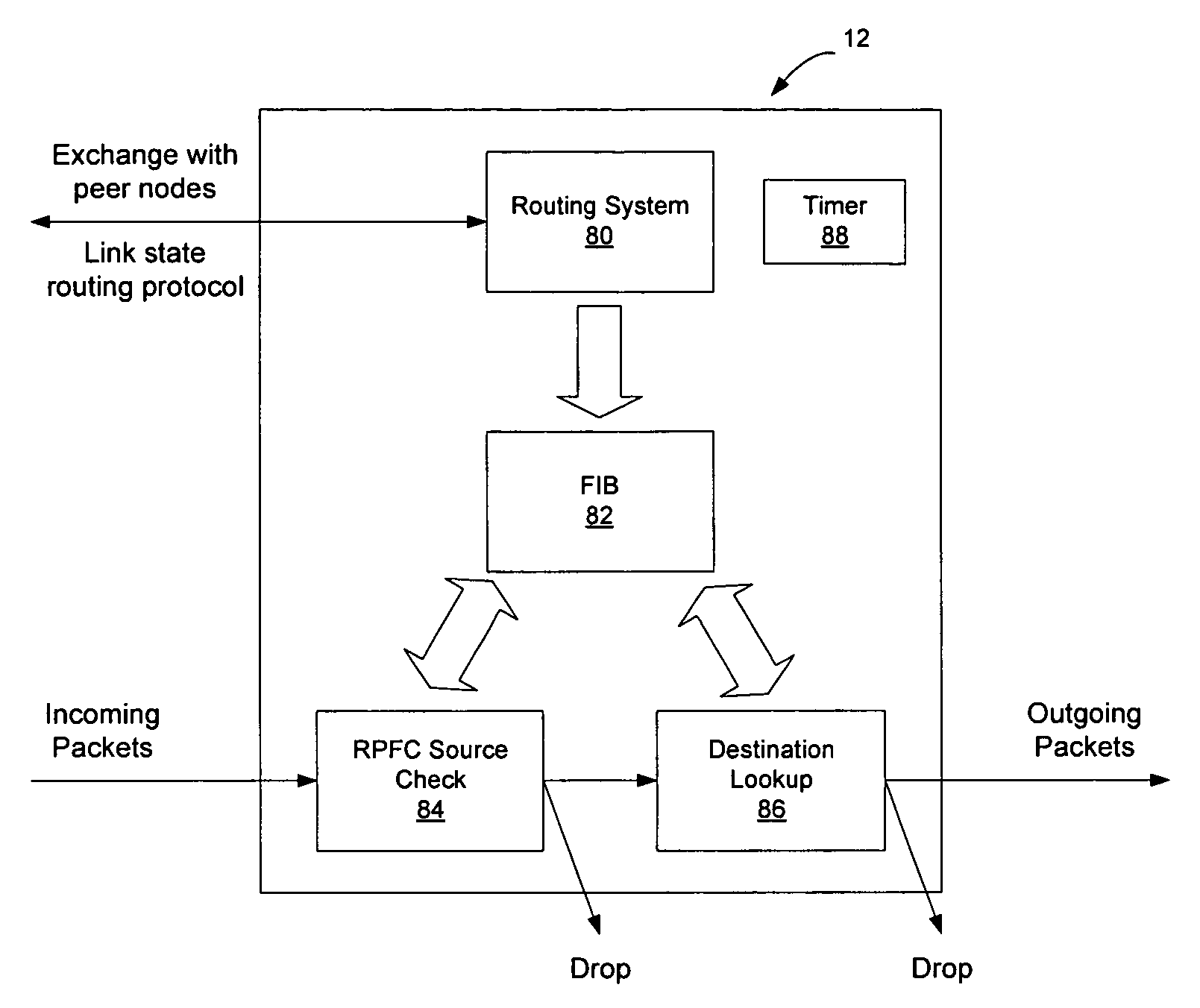Failure notification in a network having serially connected nodes
a serial connection and failure notification technology, applied in data switching networks, frequency-division multiplexes, instruments, etc., can solve problems such as limiting the circumstances under which the network can recover, affecting the network's ability to recover, and not absolutely ensuring that loops will never form
- Summary
- Abstract
- Description
- Claims
- Application Information
AI Technical Summary
Benefits of technology
Problems solved by technology
Method used
Image
Examples
Embodiment Construction
[0027]Nodes on a link state protocol controlled Ethernet network exchange link state advertisements to enable each node on the network to have a synchronized view of the network topology. The nodes use the topology to compute shortest paths through the network to all other nodes on the network. The shortest paths may then be used to insert forwarding state into a forwarding information base that will allow the nodes on the network to forward frames to the intended destination.
[0028]In one embodiment of the invention, all nodes in the network hosting a control plane are members of a common I-SID used exclusively for control plane notifications. In PLSB, this causes a multicast tree rooted on each member node of the I-SID to be created. FIG. 2 shows an example network having a mesh topology in which multiple multicast trees are rooted on each node for use in dissemination of control information on the network according to an embodiment of the invention. As shown in FIG. 2, nodes on a ...
PUM
 Login to View More
Login to View More Abstract
Description
Claims
Application Information
 Login to View More
Login to View More - R&D
- Intellectual Property
- Life Sciences
- Materials
- Tech Scout
- Unparalleled Data Quality
- Higher Quality Content
- 60% Fewer Hallucinations
Browse by: Latest US Patents, China's latest patents, Technical Efficacy Thesaurus, Application Domain, Technology Topic, Popular Technical Reports.
© 2025 PatSnap. All rights reserved.Legal|Privacy policy|Modern Slavery Act Transparency Statement|Sitemap|About US| Contact US: help@patsnap.com



